How to prevent pipes from freezing over this winter
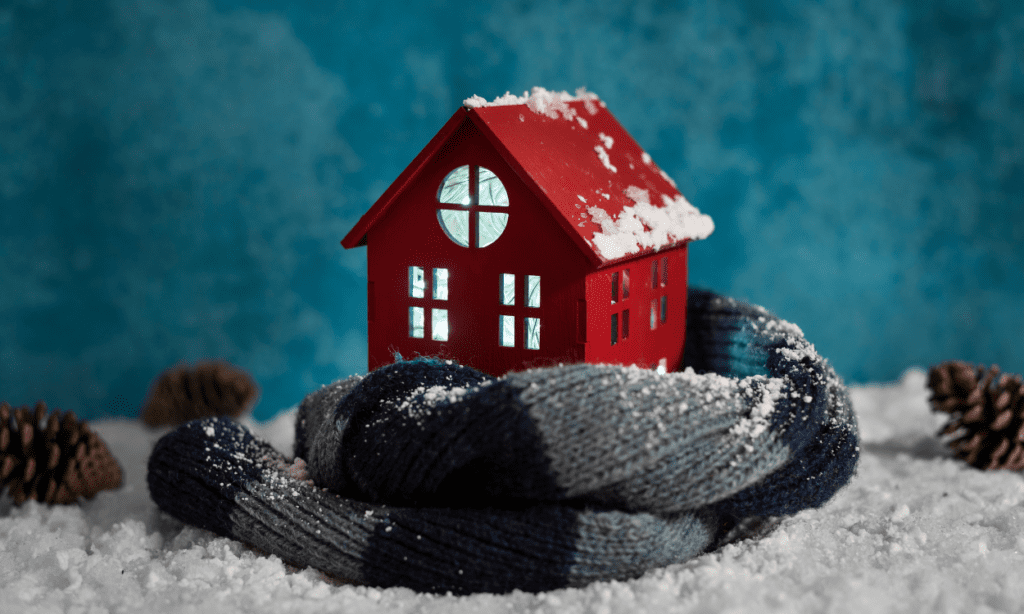
With the UK weather becoming more and more unpredictable, we need to be prepared for any eventuality. Without the proper care and maintenance, your pipes can easily freeze over in the plummeting winter temperatures. Preventing your pipes from freezing over is easy. Repairing damage from burst pipes isn’t! Luckily, GreenSmart are here to help with our guide on how to prevent your pipes from freezing over this winter. Why can frozen pipes burst? When water freezes, it expands. When water inside a pipe freezes, the expansion pressurises the pipe from the inside. Some pipes, depending on their age, corrosion level, type of pipe, and the volume of frozen water inside them, will burst at this pressure. In 2021, the average cost of weather-related home insurance claims for burst pipes was £9,300. And with the issue being an easy one to prevent, it’s definitely worth the time and effort. How to prevent your pipes from freezing? There are a number of different things that you can do in order to help stop your pipes from freezing. Have your boiler serviced Making sure that your boiler is in top working condition through an annual boiler service can prepare your pipes and system for the colder weather. If your boiler isn’t working properly, the cold spots will be most vulnerable to the low temperatures. Insulate your pipes and water tanks Insulating your pipes is one of the best ways to prevent them from freezing. Focus on outdoor pipes and pipes in colder areas of your home such as loft spaces and garages. You can buy pipe sponge covers reasonably cheaply, however you can also make your own. Leave your heating on In this cost of living crisis, most people are doing everything they can to keep their energy bills low, like turning your heating off when you’re not home. However, leaving your heating on between 12 and 15 C whilst away from the property keeps the air inside your house warm and helps to stop internal pipes from freezing. Keeping cabinet doors and any loft hatches open will also allow warm air to circulate around your internal pipework. Run your taps It’s harder for water to freeze if it is running, so it is important to turn your taps on and off regularly and allow them to trickle so that water is continuously moving. Know where your stop tap is In the eventuality that your pipes do freeze, it is essential that you know where your stop tap is and how to stop the water flow to your home. Turning off the water supply to your home can prevent more water from entering the affected pipes and causing further damage. How to thaw frozen pipes If you turn your tap on after a bout of cold weather and only get a small trickle of water, it is likely that your pipes have frozen. Luckily, if you catch it early enough (before the pipe bursts), it is relatively easy to thaw out frozen pipes. Apply heat Apply heat to a section of your frozen pipe. You can use a range of different heating methods, such as wrapping the pipe in towels soaked in hot water, or electronically heating the pipe with a heating pad, hairdryer or a portable space heater. Ensure that you apply the heat until your full water pressure is restored. If you can’t find the frozen area or it is inaccessible, contact a licensed plumber. Keep the tap on As you start to thaw out areas of the frozen pipe and the ice begins to melt, water will begin to flow. By keeping the faucet open, you allow water to flow more freely through the pipe, helping to melt the rest of the ice. How GreenSmart can help At GreenSmart, our friendly team of gas safe engineers can offer support to help prevent your pipes from freezing this winter, and even have the expertise to thaw them out if necessary. Get in touch with us today to find out how we can help you.
Our tips to reduce your gas and electricity bills

The average UK home uses around 2,900 kWh of electricity and 12,000 kWh of gas in a year. With the cost of living crisis putting a strain on everyone’s disposable income, most people in the UK are trying to find ways that they can cut back in order to save money. As part of this, many people want to reduce their bills as much as possible. Because Ofgem’s price cap is on energy units, rather than your overall bill, reducing your energy consumption can reduce your energy bills. Luckily for you, we’re here to help with some useful tips on how to reduce your gas and electricity bills. Let’s jump straight in! Tip #1 – Turn off standby How often do you turn your TV off properly? We mean off at the wall, so that little red standby light isn’t on? We’ll take a guess at not often. Most electrical appliances in your home have the ability to be switched off at the plug without disturbing their programming. It seems insignificant, but turning these appliances off of standby mode can actually save you around £60 a year! Tip #2 – Think about draught-proofing your doors and windows Unless you have a new build, chances are that you’re losing a lot of your heating through your doors and windows, gaps around your floors, and up your chimney. This is, obviously, a big waste of money, as why would you pay to heat your chimney?! Professional draught-proofing can be expensive, costing you around £300 depending on what you get done, but you can DIY your draught-proofing for a fraction of the cost, and it can save you around £50 a year on your energy bills! Tip #3 – Install a Smart Thermostat Smart thermostats are handy little electronic devices that are designed to control and manage the heating and ventilation systems in your home. Unlike traditional thermostats, which require manual adjustment, smart thermostats are equipped with sensors, Wi-Fi connectivity, and advanced algorithms to automate and optimise temperature control. Smart thermostats can make your heating more efficient by only warming the rooms you are using. They can be controlled from your phone rather than a static home device, and use their sensors and algorithms to learn how long it takes to heat the rooms in your home to a specific temperature, so that you are able to have your room at its ideal temperature at exactly the right time. If you installed smart thermostats, programmers and thermostatic radiator valves, you could save around £75 a year! Tip #4 – Install a Smart Meter A smart meter is an electronic device that allows you to easily read your gas/electric readings. It takes automatic readings of your gas and electricity usage which are then sent to your energy supplier and displayed to you on your screen. They are a cost effective way of reducing your energy consumption, because there is no upfront cost for getting a smart meter installed in your home, and your energy supplier only bills you for the amount of energy you actually use, rather than an estimation. Because you get an immediate view of your home’s energy consumption as and when energy is being used thanks to real-time data, you’ll be able to better manage what you use and how much, which can ultimately reduce the amount of money you spend. Tip #5 – Be careful with your washing and avoid your tumble dryer Washing and drying your laundry is a never-ending chore. Not only does this make it extremely tedious, it also costs you a fortune! However, by being more careful with your washing machine and tumble dryer usage, you could save around £90 a year! We understand that it might be difficult to reduce the use of your washing machine, however, if you use your washing machine on a 30-degree cycle instead of higher temperatures, or reduce your washing machine use by one run per week for a year, you may be able to save £30! Tip #6 – Upgrade your boiler Though not a cheap option, costing, on average, between £1,000 and £3,000, upgrading your old boiler to a newer one will save you a lot of money in the long run, and can reduce your annual heating bills by 20 – 35%! Tip #7 – Take shorter showers A lot of us love taking a soak in the bath or scrubbing our worries away with a nice long shower. However, reducing your shower time to 4 minutes or less could save a typical household £75 a year on their bills! As well as this, if you swap one bath a week to a 4-minute shower, you can save around £17 annually! How GreenSmart can help At GreenSmart, we offer a range of different services that can reduce your energy consumption, such as boiler replacements and various green plumbing solutions.Contact us today to speak to one of our engineers about your specific requirements and find out how we can help you keep the cost of your bills lower!
What is the ideal room temperature?
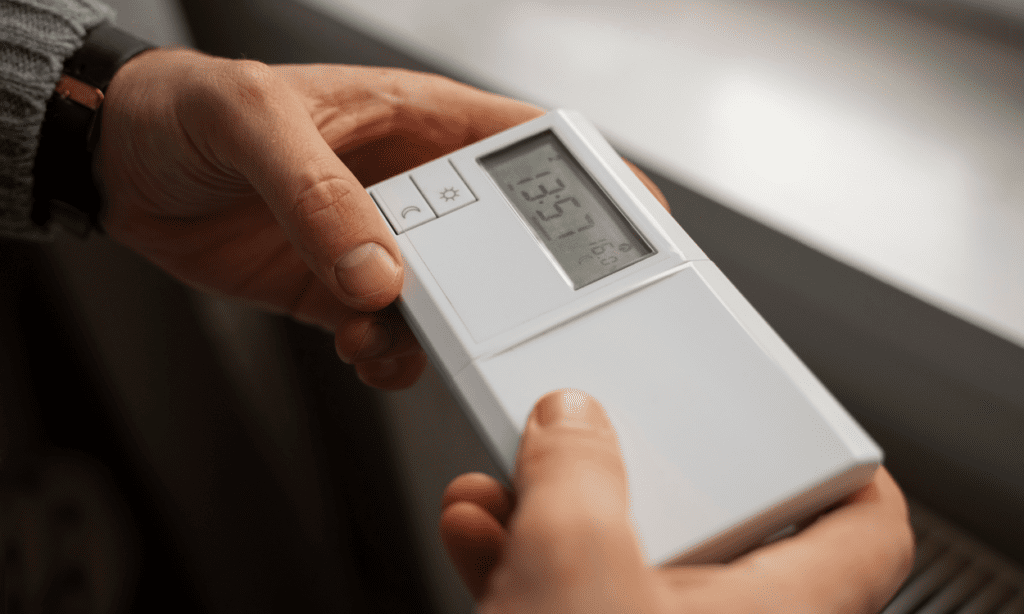
Choosing the optimal temperature for your home may be a point of contention. With the British weather not ever seeming to get better, but the cost of living crisis driving energy bills sky high, and your co-habitants fighting over the thermostat as often as they fight over the TV remote, you might be wondering if there is one ideal temperature for your home. Well, GreenSmart are here to help with this handy guide on the most comfortable temperatures for the different rooms throughout your home and the different people who inhabit them. What do we mean by ‘room temperature’? When discussing average or ideal ‘room temperatures’ throughout this article, we are referring to how hot or cold the air in a particular room is. This can be affected by a number of different factors, including the weather outside, the humidity and the purpose of the room in the house. How we experience temperature will also depend on some independent factors, such as our age, our level of activity and our choice of clothing. For example, the living room would feel warmer to someone who has just returned from a workout than from someone who has been sitting in front of the TV in shorts and a t-shirt. Additionally, an older couple may choose to heat their home at a higher temperature than a younger couple, as older people tend to feel the cold more. What is the average room temperature in the UK? Interestingly, the average room temperature in the UK is 3°C lower than what the population believe to be the ideal room temperature, at 18°C in comparison to 21°C. This could suggest that people have been turning their thermostats down a few degrees in order to save money or do their bit for the environment. So, what is the ideal room temperature? According to the Energy Saving Trust, the ideal temperature for your home is between 18°C and 21°C – so we’ve pretty much nailed it as a population! However, it’s important to keep in mind that the different rooms in your home will have different ideal temperatures, because the optimal temperatures for specific rooms usually depend on their use. Rooms you spend more time in, such as living rooms and dining rooms, should be on the warmer side, whereas hallways, landings and storage rooms can afford to be kept at a lower temperature, as they are not used for long periods of time. The ideal temperature for your living room The ideal temperature of your living room is between 19 and 22°C, because this is the room that you probably spend most of your time – often sitting still for extended periods. Because you won’t be moving around, it is more likely that you will get a bit cold. However, higher temperatures will use more energy, so 21°C is probably the highest temperature you’ll want to go. The ideal temperature for your bathroom We don’t necessarily think of our bathrooms as a room that we need to heat at high temperatures, however who wants to get out of the shower to a freezing cold room? Not us! For this exact reason, ideal temperatures for bathrooms sit at around 22°C. Running the bath or shower will increase the humidity of the room, keeping the air warmer, so your boiler won’t have to work as hard to maintain the temperature, saving you money. The ideal temperature for your bedroom Despite spending a lot of time in your bedroom, it doesn’t actually need to be as warm as the rest of your house. This is because you spend most of your time there sleeping. Most people don’t like being too hot at night, so the optimal temperature for your bedroom can be anywhere between 15°C and 20°C, depending on your preference. The bedroom is the perfect place to keep costs down, as you can keep your thermostat lower but investing in high-tog duvets and blankets. The ideal temperature for your kitchen Many of us get hot whilst we’re cooking! When we have the oven on and food bubbling away on the hob, the temperature and humidity of the kitchen fluctuates. Because of this variation in heat and humidity, the optimal temperature for your kitchen is between 18°C and 20°C. The ideal room temperature for the elderly According to the NHS, cold weather can worsen some health problems and possibly lead to serious complications, especially if you’re 65 or older. Because of this, it is especially important that elderly people stay warm. In order to stay warm, if you’re 65 or over it is recommended that your home temperature is at least 18°C and a temperature that feels comfortable to you. To avoid draughts, close your curtains and keep internal doors shut to avoid the heat from your radiators being lost into the hallway. The ideal room temperature for a baby According to the NHS, a baby doesn’t need a hot room. In fact, it could be dangerous to keep a baby in a room that is too hot, especially overnight. Overheating can increase the risk of sudden infant death syndrome (SIDS), so it’s essential that they are kept at a comfortable temperature at all times. The NHS suggests the ideal bedroom temperature for a baby is between 16°C and 20°C. You should also try to keep your baby’s room cool by closing the curtains during the day to keep the sun out and ensuring the room is well-vented. The ideal room temperature when pregnant Particularly in warmer conditions, a lot of pregnant women experience warmth and unease. Therefore, it becomes crucial to adopt measures to maintain a comfortable and hydrated state, safeguarding both your own well-being and that of your baby. Although a specific optimal room temperature isn’t suggested, the key is to ensure the room ambiance is perfectly suited to your comfort. The ideal room temperature for pets Pets are as much part of the family as you are, so you want to ensure that they are comfortable
Eight ways to improve your home’s EPC rating
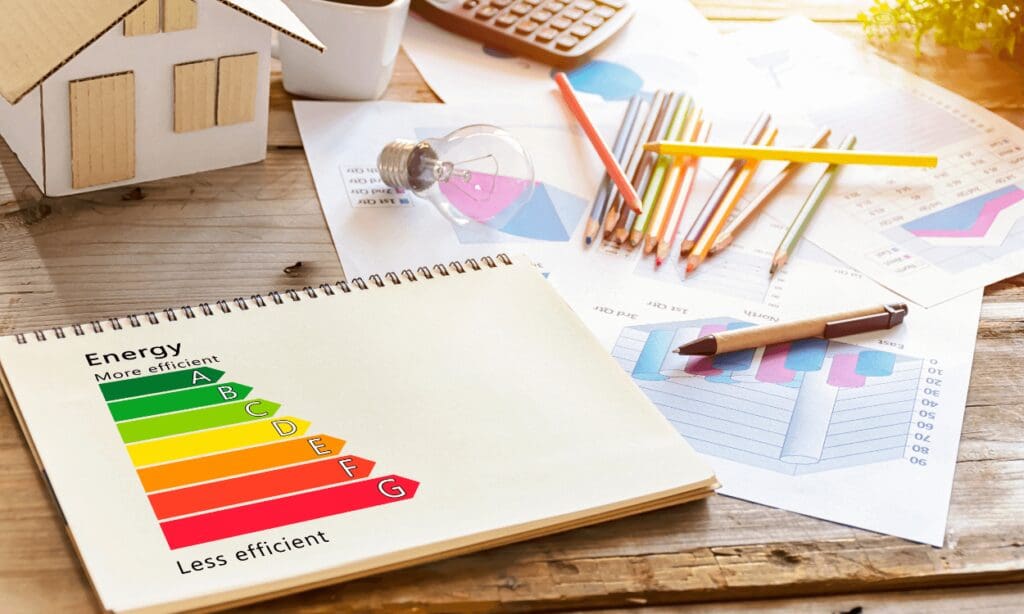
With environmental issues dominating the news, and the cost of living crisis meaning that everyone is scrimping and saving, you might be wondering what you can do to improve the energy efficiency of your home. In your research, you might have come across a little acronym called an EPC rating. But what exactly is an EPC rating, and how and why should you improve your home’s score? GreenSmart are here to help with our quick guide on how to improve your home’s EPC rating. About GreenSmart Services: Plumbing and Heating Services | Plumbing Contractors What is an EPC rating? EPC stands for Energy Performance Certificate. An EPC rating shows how energy efficient your property is. EPC ratings are valid for 10 years, but can be redone earlier if any improvements have been made to the property. They are key for individuals looking to buy, sell or rent properties, as it gives an indication of how much the inhabitant will spend on energy bills, and the carbon emissions of the property. What is the EPC grading system? Your home’s energy efficiency is measured on a scale from A to G, with A being the highest and G being the lowest possible rating. The scale is colour coded to give people a clear picture of how efficient their home is. EPC ratings are calculated by a qualified assessor. They will test various factors, such as how much potential there is for heat and energy loss, what level of insulation you have and whether or not you have double glazing. Following inspection, each factor will receive a score depending on its efficiency, and the assessor will work out your property’s overall EPC rating based on the average score. The assessor also scores each part of the inspection using SAP points (Standard Assessment Procedure). SAP was introduced by the government as a way of measuring a property’s energy and environmental performance. Each of the EPC bands are scored as follows: Why should I improve my home’s EPC rating? There are several different reasons that it might be worth you improving your property’s EPC rating. Landlords, for example, have to have an EPC rating for all of their properties, and are legally unable to rent out a property if it doesn’t meet the minimum requirement of an E. There are plenty of other reasons why as a homeowner, you might want an EPC rating. For example, by understanding how energy efficient (or inefficient) your home is, you will be able to implement more efficient measures, which will lower your consumption and therefore reduce your energy bills. On the topic of saving money, according to the Energy Saving Trust, you may even be able to achieve lower mortgage rates through Green Mortgages. As well as this, if you are considering selling your property, improving its EPC rating will also likely improve the value. And lastly, if you are conscious of your carbon footprint, by understanding how efficient your house is and undertaking some simple steps to improve it, you will lower your carbon emissions. How to improve my EPC rating? So, we’ve spoken about what an EPC rating is, how it is graded and why you should consider improving it, but how do you go about making your home more energy efficient to boost that score right up? We are here to help with eight handy tips on how to improve your rating, ranging from relatively inexpensive to the more pricey end of the scale. #1. Seek help from your energy supplier First thing’s first, you might be able to get some energy-saving help from your energy supplier under the Energy Company Obligation Scheme. If you claim benefits such as Child Tax Credit, Working Tax Credit, or Universal Credit, you may be eligible for help with the cost of insulation work or replacing or repairing your boiler. If you own your house, it must have an energy efficiency rating of D, E, F or G to be eligible for the scheme. If you rent from a private landlord, the house must have an energy efficiency rating of E, F or G to be eligible and you have to have the owner’s permission to do the work. If you live in social housing that has an energy efficiency rating of E, F or G, you might be eligible for help with insulation or installing a heating system for the first time. #2. Upgrade the lighting to LED light bulbs An easy way of improving your EPC score is by switching your old halogen or incandescent light bulbs with LED ones. It won’t boost your score significantly, but if your EPC rating is right on the margin and it won’t take much to increase it by a level or two, switching to these more energy-efficient, eco-friendly light bulbs could make the difference. LEDs have become increasingly popular over the last few years because they are efficient and could create long-term savings on your energy bills. #3. Install a smart meter Whilst installing a smart meter won’t improve your EPC rating on its own, it will be able to give you an insight into how much energy your home uses and a greater understanding of which changes you need to take. Because of this, you are more likely to have more success when trying to improve your EPC rating if you have a smart meter installed. #4. Invest in double or triple-glazed windows Most modern homes have double glazing, however if you have an older property, the single glazing might be dragging you close or even below the minimum EPC rating. By investing in double or triple-glazed windows, you can significantly reduce the amount of heat lost through your windows and help to boost your property’s EPC rating by approximately five to ten points. As well as this, it is a relatively cost-effective step, with terraced properties usually costing between £2,000-£5,000 to upgrade. Triple glazing is a more drastic step, though it is rising in popularity. It is
The ultimate heating, gas and plumbing glossary
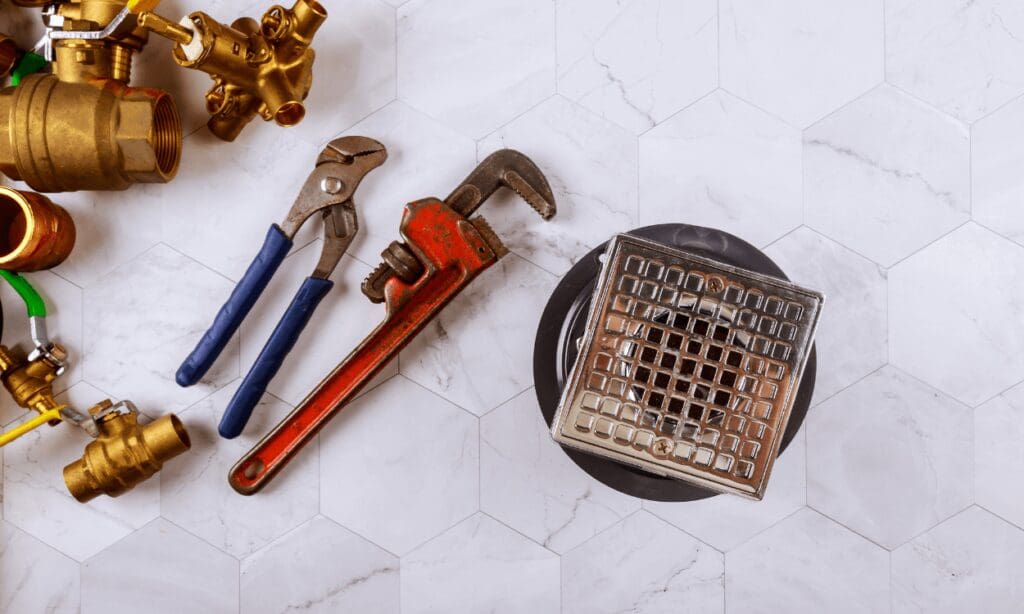
The world of heating and plumbing can be confusing. It’s full of jargon that no one understands, which can lead to uncertainty and worry if you need to speak to a professional. Have no fear, GreenSmart to the rescue! Our alphabetised list of the common terms used in the plumbing, heating and gas industry will no longer leave you wondering what on earth your plumber just said. So, without further ado, let’s get into it. A. Automatic Air vent: A device used to release trapped air from heating systems or pipes, ensuring efficient water or air circulation and preventing airlocks. Airlock: When trapped air blocks the water from getting to the hot water taps or central heating system. B. Back Boiler: Large boilers fitted behind a fireplace that were installed in the 1960s, 70s, and 80s. Back boilers are no longer being made, and should be replaced. Balancing Radiators: This makes sure that all of the radiators around your home are heating up evenly. This process is tricky and time consuming, so should be undertaken by a professional. Bleeding radiators: The process of freeing trapped air from the heating system in order to regulate the heat circulation. Boiler: A heating appliance that uses gas, oil, or electricity to heat water providing central heating and hot water for buildings. C. Capacity (in terms of cylinders): The amount of water in litres that the cylinder is able to store. Homes with more bathrooms will need a cylinder with a larger capacity. Combination (Combi) boiler: A central heating and hot water system in one unit. It differs from other boilers as it doesn’t require any external parts. They are only recommended for homes with one bathroom, as their hot water supply is limited. Condemned Boiler: A boiler that has been labelled unsafe by a professional heating engineer. They will stick a ‘Danger Do Not Use’ sticker to the boiler, and you should seek to get it replaced as soon as possible. Condensate Pipe: When a condensing boiler recycles heat from waste gases, it produces condensation. This liquid is sent down the condensate pipe and directed away from the property to an external drain. Condensing Boiler: A high-efficiency boiler that recovers and utilises heat from water vapour (condensation) to increase overall efficiency. D. Domestic Hot Water (DHW): Water that comes from a hot tap or cylinder. Drainage: The system of pipes and fittings designed to carry waste water from buildings to a sewer or other disposal point. E. Electric boiler: Rather than burning fuel, electric boilers turn electricity into heat. They’re very efficient as all of the electricity can be turned into heat. Energy-related Products Directive (ErP Directive): A directive introduced by the EU in 2015 to reduce carbon emissions. It included new criteria for manufacturers to produce more energy-efficient products and a new labelling system to classify product efficiency. This updated the way we classify boiler efficiency. Expansion Vessel: A component in a closed heating system that absorbs the expansion of water as it heats up, helping to maintain a safe pressure level. F. Fan: This is used to push or pull harmful gases through the boiler’s flue pipe. As fuel is burnt in the boiler, harmful gases are released, and it is crucial to have a fan to redirect those gases out of the boiler and away from your home. Feed (Cistern) and Expansion Tank: Fitted in the loft, the feed and expansion tank fills with cold water from the mains, which is fed to the heating system. Flue: Waste gases from burning fuel are emitted out into the atmosphere through the flue. These need to be fitted in a safe location inline with the Boiler Flue Regulations. Fossil Fuel: A natural energy resource formed from the remains of ancient plants and organisms that lived millions of years ago. These fuels include coal, oil, and natural gas, and are considered non-renewable because their formation process takes millions of years. Fossil fuels are burned to produce energy, such as electricity, heat, and transportation fuels, but their use releases carbon dioxide and other greenhouse gases, contributing to global warming and climate change. G. Gas: Most boilers across the UK run on natural gas. It’s supplied directly to homes via the gas network and then burned by the boiler. Gas Metre: A device used to measure the amount of natural gas consumed by a building. Gas Safe: A gas boiler service, repair, or replacement must be carried out by a Gas Safe registered heating engineer. They’re the only people qualified to work on gas appliances. Green Plumbing: The investment in eco-friendly modifications and products to minimise water consumption, conserve energy, decrease chemical effects and lower utility bills. Ground Source Heat Pump (GSHP): A renewable heating system that extracts heat from the ground to provide warmth for buildings. It utilises the constant temperature of the earth to heat a fluid, which then transfers the heat to a heating system or hot water supply. H. Heat Exchanger: A device inside the boiler that allows the heat from burning gas to be transferred through the surface of internal pipes to the water supply. This creates the hot water, which is then directed around the heating system. The heat exchanger is a crucial part of the boiler. I. Immersion Heater: An electric heating element used to heat water in storage tanks, typically used as a backup for central heating systems. Increase Boiler Pressure: Boiler pressure should sit between 1 and 2 bar (always check the manufacturer’s instructions though). Your system has low pressure if it drops below 1 bar and needs to be increased. You can take a pressure reading by looking at the pressure gauge on the boiler. Insulation: A material (that often looks like a thick fluffy rug) used to prevent heat escaping from the home through the walls, roof, or floor. Increasing the level of insulation in your home will increase efficiency and help to lower your heating bills. J. Joule: The unit of energy
Which boiler is the best fit for my home?
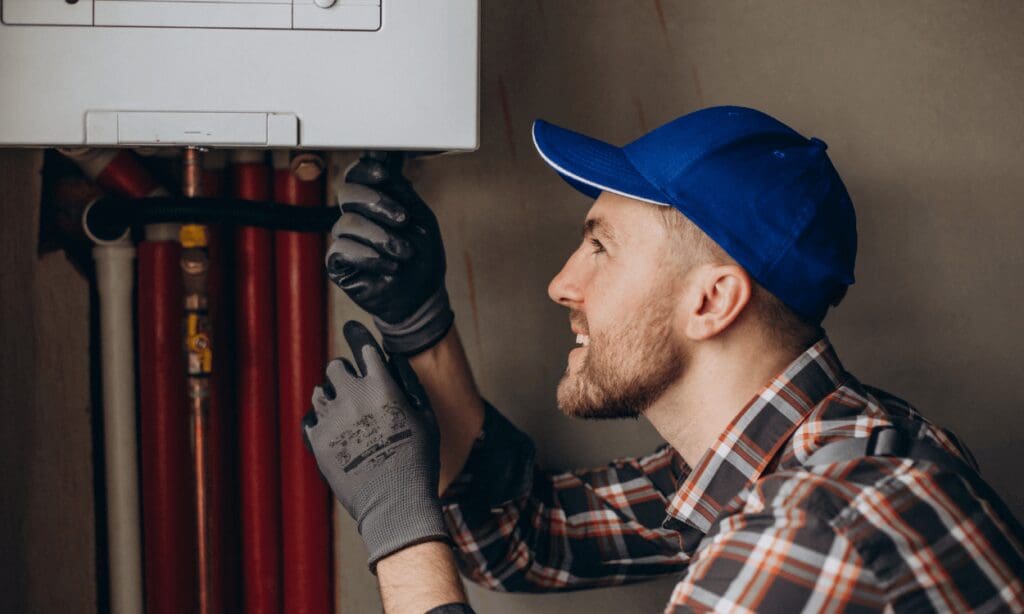
Need a new boiler replacement but unsure on which one you need? With so many different options on the market, choosing the right boiler for your space can be a minefield. Luckily for you, our friendly team here at GreenSmart are here to help you with our handy guide on which boiler is the best fit for your home. Of course, we will always perform a site survey to check the suitability of a boiler for your home. What are the different types of boilers? There are a range of different types of boilers for you to choose from. Your choice will be dependent on a range of factors, including your requirements and the size of your property. There are three main types of boiler, which we will discuss below. Combi-boilers Combination boilers, also referred to as combi-boilers, are the most popular boiler choice in the UK. They are named combination boilers as they deliver both heating and hot water. They work by supplying instant hot water directly from the mains cold water supply to your taps, eliminating the requirement for a hot water cylinder. With a combi-boiler delivering hot water, you can enjoy a shower without the necessity of an additional shower pump. These boilers integrate all heating system components into a single unit, removing the need for a separate hot water cylinder and associated loft tank(s). This compact design makes them exceptionally suitable for properties with limited space. For homes with a bit more room, there is another, slightly bigger type of combi-boiler, known as a storage combi-boiler. These boilers work in a similar way to combi-boilers, but incorporate a hot water tank, similar to conventional systems, which allows hot water to be stored and used later. Heat-only boilers A heat-only or regular boiler heats up the heating system water and diverts it between the hot water cylinder coil and the radiators in your heating system. This system utilises a hot water cylinder which stores the hot water that is sent to your taps. This hot water is heated indirectly by the heated heating water that passes through a coil within the cylinder. The two bodies of water never directly come into contact. These systems are better-suited for larger homes that have multiple bathrooms and lots of radiators as the cylinder can take up a considerable amount of space. A lot of people store the cylinder in a cupboard and use it as an airing cupboard. System boilers The third boiler option is the system boiler. System boilers function in a very similar way to heat-only/regular boilers except they have some of the system components included within them like the circulation pump and expansion vessel. System boilers are particularly well-suited for properties with multiple bathrooms or higher hot water demands as they work alongside a hot water cylinder. How to choose the right boiler for your home Not all boilers are suitable for every home and it’s important that you choose the right type with a good plumbing and heating service to ensure that your heating and hot water works efficiently and effectively. There are a few different factors that will help you decide which boiler is right for you and we’ve listed them below. Existing system A lot of the time, it is cheaper and more practical to upgrade your old boiler to a new one that is the same type. However, there may be a few times or reasons why this wouldn’t be advised, such as in an old property or a home in which will be extended to incorporate a lot more rooms or bathrooms. Available space The space that you have available in your home will often be the biggest reason behind your choice of boiler. For example, if you have minimal storage space, it would be unwise to choose a heat-only boiler, as these require a lot more space for the hot water cylinder. Hot water usage Your choice of boiler will also depend on your hot water usage. If you anticipate a demand for hot water from various outlets at the same time, a system boiler or heat-only boiler with a hot water cylinder may be more appropriate than a combi boiler. How to choose the right size of boiler for your home? Once you have chosen which type of boiler is right for you, you will need to figure out which size boiler you need. Again, this is down to a number of different factors. Property size One of the biggest factors when choosing what size boiler you buy is the size of your home. Because your boiler will be your main source of heating for your home, you need to make sure that it is big enough to heat every room. Domestic boiler size is measured in terms of heat output, which can range up to 70kW. Usually, the size of your boiler is determined by your number of radiators or your hot water demand. The size of heat-only and system boilers is determined by the amount of radiators you have and your hot water cylinder. You should avoid choosing a boiler that is too big for your home, as it will result in a more expensive energy bill and is a waste of gas and electricity. For combi-boilers, the boiler size is usually determined by the hot water demand. A qualified heating engineer will assess this for you prior to final recommendation and fitting. Hot water demand Another factor that can help you figure out your boiler size is your hot water usage. Typically, for households with one bath and shower, a boiler with a capacity of 24-30 kW is often recommended. If there is an additional en-suite bathroom, opting for a larger 30-35 kW boiler might be advisable. However, if your home has multiple bathrooms that are likely to be used at the same time, a system or heat-only boiler with a storage cylinder for hot water may be more appropriate. Heat loss There is an equation
Five common boiler problems and how to fix them
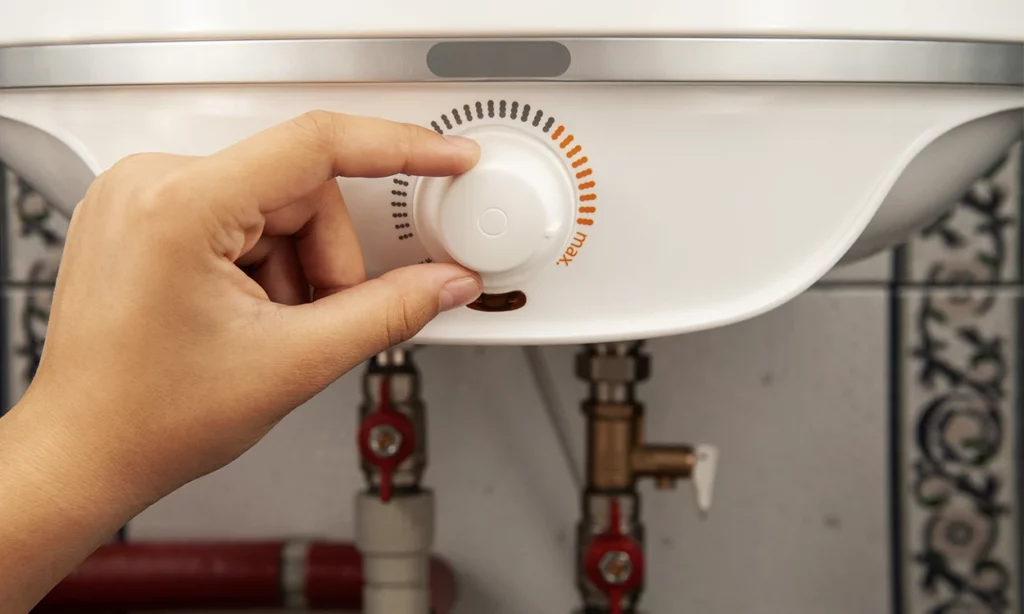
It’s always annoying when your boiler stops working properly. If you are not sure what to do, its best to get a plumbing and heating services engineer to take a look. Boiler problems are actually more common than you think. In fact, one study found that in 2016, one in five homes in the UK suffered a boiler breakdown! Boiler problems could potentially be dangerous if not sorted properly. We want to help you to identify what is wrong with your boiler, so that you know whether the issue is able to be fixed yourself with a simple adjustment or two or if you will need a qualified Gas Safe engineer to fix it for you. 1. Low boiler pressure One of the most common boiler issues is low pressure. Your boiler relies on an optimum pressure level to be able to maintain the circulation of water throughout your system. Usually, you are able to identify if your boiler has lost pressure by looking at the pressure gauge. There could be a number of reasons that you are suffering from low system pressure, such as a leak or you have recently bled your radiators and the system has lost pressure. Leaks within the system can be caused through failed joints or seals. If you spot a leak, do not attempt to open the boiler or fix the leak alone. This is a job for a professional. However, if you can’t spot an obvious leak, or you have recently bled your radiators or kept your heating off for an extended period of time and know this to be the cause, you can top up your boiler pressure yourself. Open the filling loop taps on your boiler until you achieve the desired pressure. This is usually around one bar. Once this is done, close both taps, and your boiler should start to work properly once more. 2. No heating or hot water When your boiler doesn’t do the thing it’s meant to do (heat your home and/or provide you with hot water), naturally you will be frustrated and want to fix the issue as quickly as possible. There can be multiple reasons for your boiler to experience a complete ‘lockout’, including a pressure issue, frozen pipes, faulty valves or thermostat problems. If you’ve checked your pressure and it is normal, reach out to our gas safe general plumbers who should be able to help. They will be able to repair your boiler for you as quickly as possible and get your boiler back to full working order. Learn more about boiler servicing and repairs. 3. Frozen condensate pipe A condensate pipe is an additional pipe that allows slightly acidic waste water to be removed from your boiler, to a suitable termination point. It can be common for the condensate pipe to freeze if it’s ran externally to the property, especially in the colder months, causing the boiler to stop working. Most of the time, you will know when a frozen condensate pipe is causing your boiler to lock out because a relevant fault code will appear on the boiler. This issue is often resolved easily by thawing out the contents of the pipe. Usually, the pipe will be frozen at its most exposed point, such as at the open end of the pipe or at a bend. Pour hot water along the length of the pipe, repeating the process until the pipe has thawed out. Make sure not to use boiling water, as it can crack or damage the pipe. For long-term prevention, it might be a good idea to insulate the pipe, and if it is installed externally, get an engineer to relocate the pipe so that it is inside as much as possible. 4. Radiator faults If you’ve noticed that a radiator is warm at the bottom but cold at the top, then it probably needs bleeding. This is a common issue that occurs when there is trapped air, preventing the circulation of warm water around the entire radiator. It is an easy problem to fix by bleeding your radiators, using a bleed key and a bucket/bowl. If the radiators throughout your house are all heating up at different speeds, they probably need balancing. This is a bit more of a complex procedure, so it is worth contacting a plumber to do this for you. 5. Gurgling, banging or whistling noises coming from your boiler It is normal for your boiler to make some noise whilst it’s in operation, especially when it is staring up. However, if your boiler suddenly begins to make unusual banging, whistling or gurgling noises, this may be caused by other issues. Unusual boiler noises can be caused by air in the system, a faulty pump, low water pressure or even a build-up of limescale. If you notice unusual noises coming from your boiler, we recommend getting in touch with a qualified engineer so that they can diagnose and fix the issue. How GreenSmart can help At GreenSmart, we have vast knowledge of all things plumbing and heating. We pride ourselves on our high standard of work and the excellent customer service that we provide. If you notice any issues with your boiler, feel free to contact us and one of our friendly team will be happy to help.
How to find your home’s water stop tap
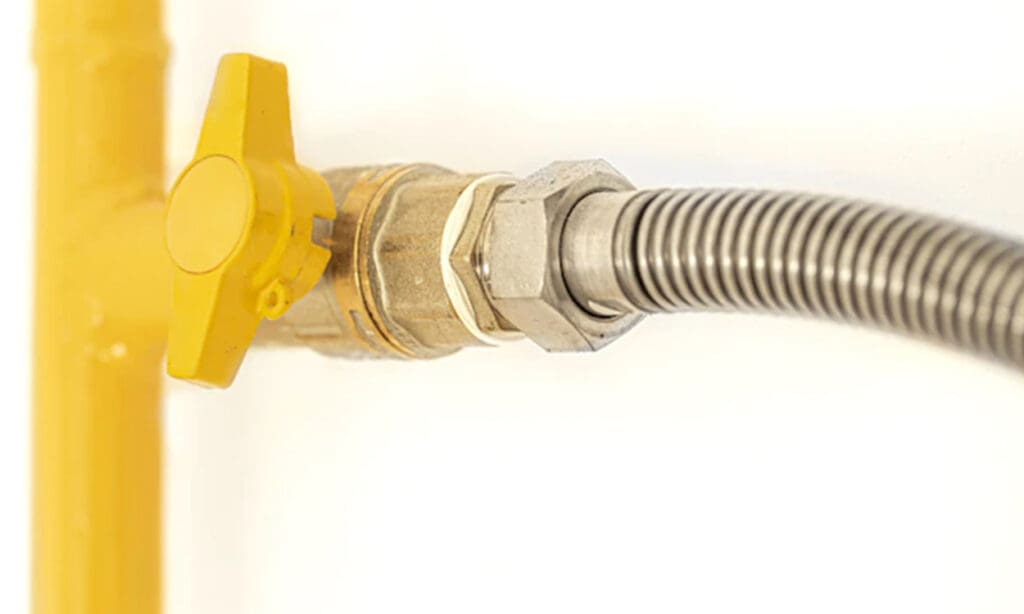
As a homeowner, it is important that you know where your water stop tap is located in case of an emergency, such as a burst pipe. But what is a stop tap, how do you locate the one belonging to your property, and what do you do with it once you’ve found it? What is a stop tap? A water stop tap, otherwise known as a stopcock or a stop valve, is a small tap that is located on a water pipe. They are used to turn the water supply on or off for your property. There are two different types of water stop taps – internal and external. How do I find my stop tap? Where your water stop tap is located depends on the type of stop tap you’re referring to – internal or external. Internal stop tap Internal stop taps turn off the water supply to a single property, and it is the responsibility of the occupant to ensure that it is working correctly. In most properties, the stop tap is inside the building, close to where the water pipe is located. The exact place can vary, but you will often find your internal stop cap in one of the following places: External stop tap An external stop tap controls the main water supply to your property, and is sometimes shared with your neighbours. It is the responsibility of the water company to ensure it is working properly. You should only use an external stop tap if you cannot find your internal one, or if it isn’t working. An external stop tap is usually located close to your property, such as: If you share with your neighbours, please make sure to let them know that you are turning the water off. How do I use my stop tap? This depends on the type of stop tap you have. The most common types are either a conventional twist style brass tap or a more modern lever valve which typically has a handle that turns 90 degrees. Once you have located yours, they are very easy to use to turn your water supply off and back on again. You should be able to operate it yourself. If you have the more conventional twist style brass tap then to stop the water supply to your property, turn the handle clockwise. It may take a few turns to stop the water, and you shouldn’t need excessive force to turn it off. If you are using an external stop tap, you may need a stop tap key to be able to turn your main water supply off or on. It will take a few minutes for the water to stop running in your taps, as there will be water left over in the pipes from before you turned the water off. To turn your water back on again, turn the tap anticlockwise until you cannot turn it any further. It may take some time for the water to start running from your taps again, as it will need to run through the pipes once more. How GreenSmart can help If your inside and outside stop taps aren’t working, or you are unable to locate them and you need to turn your water supply off or on, contact us and we will be able to send one of our experienced engineers round to help.
How to bleed your radiators
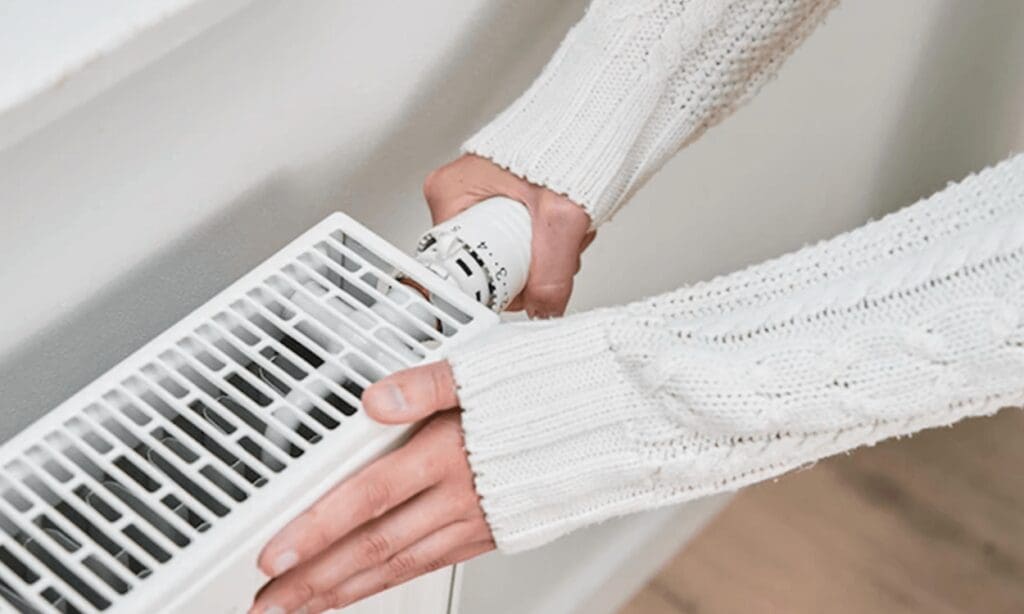
If you’ve noticed that your radiators aren’t heating up properly or are cold at the top and warm at the bottom, they may need bleeding. Luckily, this is a relatively easy job for you to do without the help of a professional, so we’re here to give you a step-by-step guide on how to do it. When would bleeding a radiator be necessary? Radiators need bleeding when there is air trapped in them. This trapped air will stop the warm water circulating within them, which can make them warm at the bottom but cold at the top. Trapped air means that the central heating system isn’t working efficiently, and it can take a longer time to warm the room, which can cost money – and in a cost of living crisis, this is something we want to reduce as much as possible! Another sign of trapped air is noisy radiators that are making loud banging, clanding or gurgling noises. These sounds are annoying, but are often not a cause of concern. We recommend that you bleed your radiators once a year, even if they are all working properly, as this will ensure that your central heating system is working efficiently. How to bleed your radiators? You’ll only need two or three pieces of equipment to bleed your radiators, both of which are easy to find at a DIY store if you don’t already own them: The first step in bleeding your radiators is to turn your heating off and allow your radiators to cool down completely. This will stop you from burning or scalding yourself on hot water. Once your radiators have cooled down, hold your jug or cloth under the bleed valve and insert the bleed key. The key will fit into the square groove in the centre of the valve at the top of your radiator. Slowly turn the key anti-clockwise until air starts escaping. Don’t worry – you’ll know when the air is escaping because you’ll hear a hissing noise. Your jug or cloth will be in position to catch any leaking or spraying water. Once the hissing stops and there’s only water coming out, quickly retighten the valve by turning the key clockwise. Turn your central heating system back on and allow your radiators time to heat up again. If heat is evenly spread through the radiator and it seems to be heating up properly, you’ve fixed the problem. Bleeding your radiators can cause your pressure to drop. Check the pressure by looking at the gauge on your boiler.If the pressure is too low, you’ll need to top it up by using the filling loop. If you are unsure whether the pressure on your boiler has dropped, or if you need assistance when topping it up, speak to one of our friendly team members and arrange a call out. Still not working properly? If you find that your radiators still have cold spots after bleeding them, you may have another issue. Please contact us today to get the assistance of one of our registered Gas Safe engineers.
A guide to central heating system power flushing: what it is and how it works
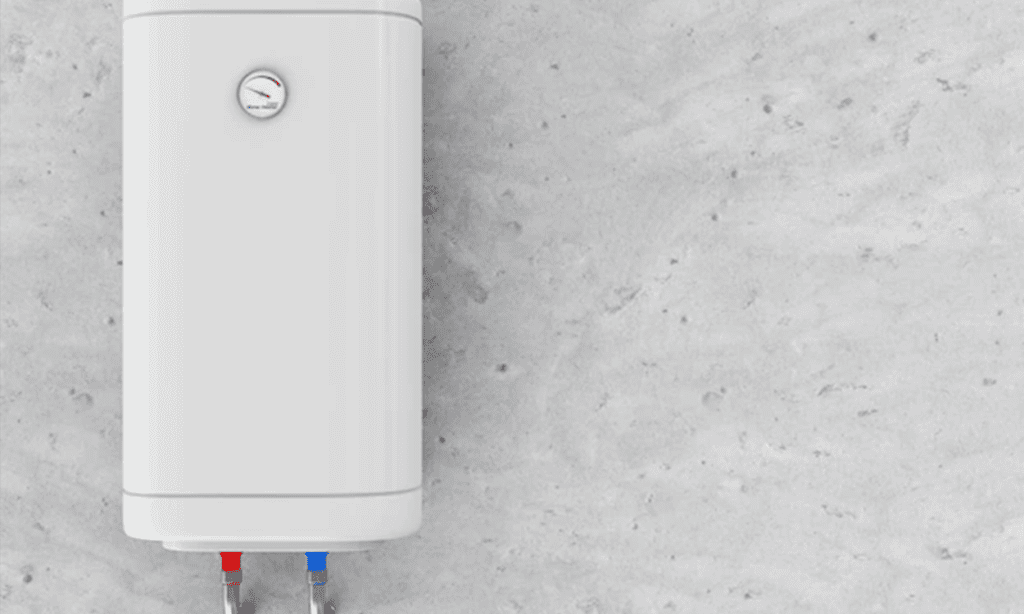
There’s no doubt that your central heating system gets mucky. It holds litres of water that circulates around your home via pipes and radiators, so naturally, it will gather some grime, sludge and debris along the way. The solution is to give your system a thorough cleansing with a power flush – a dedicated cleaning method that helps to keep your home’s central water system functioning as intended, whilst also preventing potential problems from occurring in future. What is a power flush? A power flush essentially does what it says on the tin. It’s a powerful cleanse that is used on your home’s central water system to flush out and remove byproducts such as rust from pipework and radiators and other general debris that has naturally built up within your system over time. If left to idly gather, sludge and the other listed byproducts can cause blockages, corrosion and general wear and tear on your central heating system, ultimately reducing its efficiency, lowering its lifespan and potentially leaving you with big bills to pay out of pocket for. What happens during a power flush? A power flush is conducted by an engineer that connects a specialised pumping machine directly to your heating system that circulates water with chemicals throughout your heating system at high pressure. The chemicals that are pumped through your heating system are specially designed to remove the sludge and debris to help clear the system. Once the flush is complete a suitable corrosion inhibitor is added to the system followed by a system water quality test to ensure the water within your heating system is where it needs to be. How long does a power flush take? The time taken to entirely powerflush a central heating system will depend heavily on the type/size of the system and boiler your home has. Not only this, the condition of your home’s heating system will also affect the length of time that will be needed to conduct a thorough clean. Roughly, a power flush will take 6-8 hours to complete but can take a day or two heavily depending on the size and extremity of your water system’s condition. How to tell if your system needs a power flush Your home’s central heating system will tell you when it’s in need of some TLC and communicates the signs it needs a power flush in different ways. Spotting the signs: Benefits of a power flush As stated previously, a powerflush can help to keep your boiler and central heating system running smoothly and efficiently. As a result of directly flushing the system, it helps to improve the overall system performance which means your heating doesn’t have to work as hard to push the water through. This in itself means less energy is consumed, and therefore, lower energy bills. Not to mention all the other benefits provided by giving your central heating system a power flush: How often should you flush your central heating system? If you get your boiler serviced and checked annually (which is highly recommended), then your heating engineer will do an inspection of your overall heating system as part of their routine checks anyway. It will be at this point that they may advise you to pursue a central heating system power flush if they notice any blockages or problems. If you’re getting a new boiler installed into your home, then a power flush should be executed as part of the installation process. Who should perform the power flush? A power flush should not be conducted by yourself or even by a very handy DIY-obsessed friend/family member. A fully qualified heating engineer should always be the one to work on a power flush service as they hold the required qualifications and expertise needed to perform a power flush in accordance with regulations and safety standards. Any mistakes made to the heating system could end up leaving it in a worse state than it was before, so ensure that a qualified professional is the one to do the job. Our team of Gas-Safe registered heating engineers hold the qualifications, accreditations and experience to handle both simple and complex central heating systems. How much will it cost? The cost of a power flush will depend on the size of your home’s system and the severity of the flush itself. Pricing for a power flush can start at around £500, but can increase depending on the size and condition of your system. Consult with your engineer to understand how much a power flush for your home could cost and to see if/what financing options they may have available. Want to arrange a call-out? Our friendly and qualified Gas-Safe registered team of engineers are on hand to review your home’s central heating system and provide our expertise to conduct a power flush should your home need it. Get in touch with one of the team today.
What is Green Plumbing?

With the rising temperatures, melting ice caps and air pollution, many people are looking to more environmentally friendly solutions. Eating less meat and recycling frequently are important ways of reducing your individual impact on global warming, but what if we told you that there’s a way for your plumbing to help save the planet, and save you money, without you really needing to think about it on a daily basis? With World Earth Day upon us, at GreenSmart we wanted to spread the word about green plumbing so that we can help you be more eco-friendly. What is green plumbing? Green plumbing is the investment in eco-friendly modifications and products to minimise water consumption, conserve energy, decrease chemical effects and lower utility bills. It can include the installation of water saving taps, solar-powered hot water, water storage tanks, septic tanks, rainwater harvesting devices and rainwater powered toilets and washing machines. Traditional kitchen and bathroom plumbing is notoriously inefficient. A standard water heater uses a large amount of energy by constantly keeping hot water ready, even during times when no one in the building would use it. Standard toilets often use several gallons of water for a single flush, but green plumbing helps to resolve this waste to help make homes and businesses more efficient and environmentally friendly. What are the advantages of green plumbing? Obviously, the biggest advantages of green plumbing are the decreased environmental impact of eco plumbing systems, and the reduced waste that they produce. As well as this, they also save money, extend the usage of your appliances due to the reduced water flow, and improve the health and hygiene of those living in the property due to the better air quality and uncontaminated water supply. Does green plumbing cost much? Taking on modifications in your property, depending on how many you make and which you choose, can be costly in the short-term. However, green plumbing is guaranteed to save money on bills because it diminishes waste. Water, for example, is easily wasted – especially in the kitchen and bathroom. A leaky tap, for example, could waste up to 3000 gallons of water a year, and flushing the toilet uses between 3 and 6 litres of water per flush. Installing low-flow showers and toilets can minimise water consumption and reduce your water bills, and installing a tankless water heater can save you money on energy bills because they heat water only when you need it, rather than constantly – like traditional plumbing measures. As well as this, the reduction in water flow ensures less wear and tear and therefore fewer repairs or replacements of pipes and appliances, contributing to future savings too. Contact GreenSmart today to discuss our green plumbing services and find out how we could help you be more environmentally and economically friendly.
Our Favourite Kitchen Styles We Cannot Wait to See in 2023
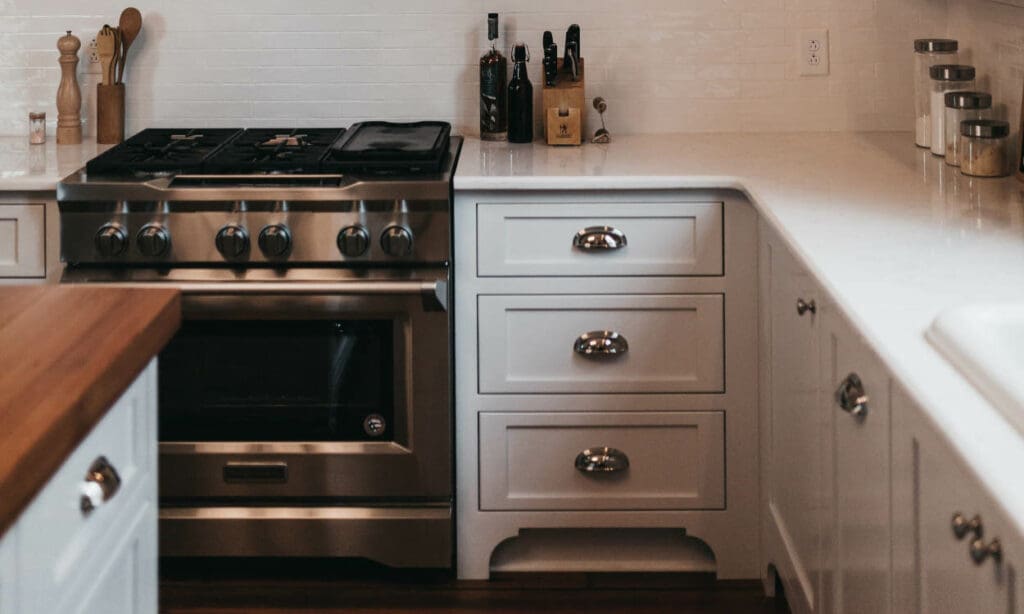
The humble kitchen is the most important and influential room in your entire home. Even for those who are perhaps not avid cooks, kitchens are still important parts of any home. They are where stories are told, meals are enjoyed, experiences are shared and memories are made. With the world moving in a direction of combining aesthetics with practicality, we’re excited to see what 2023 has in store for kitchen interiors and styles. And if you’re hungry for a new kitchen installation this year, have a gander at some of our favourite kitchen designs and trends cropping up this year for some inspiration. Trending Styles Organic & Eco-friendly With the population shifting focus towards nature and the environment, kitchen interiors have been and will continue to make a beeline towards organic, natural and sustainable styles. Homes in general have seen an increase in natural materials and decors such as plants, woods, wicker, and concrete incorporated into rooms and it would seem this won’t be stopping this year with kitchens. We’re pretty thankful to see this style becoming mainstream. Anything that can help reduce the use of microplastics and materials that aren’t brilliantly friendly to the environment is a win in our books! Re-use & Recycled Out with the old and in with the new couldn’t be farther from reality in 2023. We’re seeing a lot of repurposing of items and furnishings, all being added throughout entire homes in general. It’s a great way to show some love to an item that either had a previous purpose or belonged to someone else. And don’t discredit the idea of recycling something to add to your kitchen so easily! Yes, there are large-scale DIY projects you can do to repurpose an item for your kitchen but sometimes just buying a second-hand set of chairs off eBay or Facebook Marketplace and giving them a fresh lick of paint can really bring your food-prepping haven to life. Warm & Earthy Creating warmth via colours, textures, lighting etc creates an inviting and comforting feel which is one of the biggest attributes most people want when it comes to their kitchen. It needs to feel safe, welcoming and accommodating so using soft elements and natural lighting will bring this feeling of warmth into the kitchen. Combining rustic features with softer elements such as wood floors and neutral wall paints or wallpaper (and vice versa) can help to achieve this and make your kitchen feel earthy and spirited. Waking up to get breakfast or your morning coffee in a kitchen that breathes energy and warmth is perhaps the best way to feel rejuvenated and ready for the day ahead. Patterns & Textures Fluted If you’re searching for textures that just scream chic, then look no further than fluted (and ribbed textures). Whether you opt for bamboo, wood or other, this texture is an excellent addition to any modern kitchen. It’s a versatile style to incorporate into your kitchen and adds a real pop of character to the room. Plus, the movement and dramatic style further compliments the natural energy harnessed within kitchen spaces. Ribbed and fluted textures can be added to cupboards and drawers but are more popularly stylised on kitchen islands. Copper Copper and occasionally brass metals have been popular for a while now and are being increasingly introduced throughout homes, in particular bathrooms. But this style is starting to branch beyond the washroom environment and making its way into the kitchen scene. Copper accentuates other features of the kitchen such as the drawers, taps and even backsplashes. If you want your kitchen to hone in on that rustic and warm feel, then mixing in some metal features like copper is the way to go. Wood Like mentioned earlier, organic and natural assets such as wood are highly favoured elements of kitchens. Recent years saw popularity in lighter woods the likes of oaks and birch which were used for past trending Scandi-style kitchens. But now is the turn of slightly more dramatic and richer woods such as walnut and mahogany. Even painted woods are becoming quite trendy which we love to see. Whilst these can also include matte black painted wood, we have also seen some truly unique, fun and bolder choices such as greens, pinks and yellows. Colours Forest Greens Forest green has been a popular colour in the world of interior design for some time now but is something we’re looking forward to seeing more of this year in the kitchen especially. Rich Modern Sleek Ocean Blues Deep blues have also been popular in tandem with greens too. We’re especially fans of the blue-green colours that make us think of the ocean and navy colours too. Luxurious Adventurous Warming Matte Blacks Matte blacks are typically used in kitchens as accents but do also work well as the main attraction, especially if paired with complimentary wood flooring and furnishings. Powerful Contemporary Sophisticated Sage Greens Sage greens are seeing the light of day this year, particularly in those organic and natural kitchens. It’s a luscious and calming colour that replicates nature. We’re all for it. Calming Refreshing Harmonious Dusty Pinks Both a brilliant pairing with matte blacks and sage greens, but a solo trending colour by itself. Dusty pink kitchens are on the rise and partner superbly with lighter woods and patterns such as herringbone. Youthful Warming Invigorating Earthy Terracottas Terracottas and colours in the clay and rust palette are excellent for creating that organic and earthy feel that we’re looking forward to seeing in 2023. Somehow, it’s a style that is both classical and modern. Inviting Stimulating Enthusiastic Warm Whites Classics are timeless. The familiarity of whites for a kitchen is comforting but with the trend of warmth, whites that are not too polished seem to be taking over this year. We think they look brilliant and work well with all of the kitchen colour trends of 2023. Friendly Classical Versatile Features Styled Tiles/Slab Backsplashes Gone are the days of plain white wall tiles and backsplashes. 2023 is the